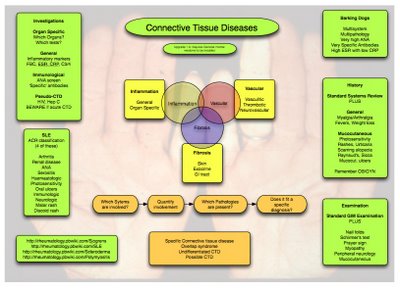 A thing of beauty is a joy forever. Even my nemesis pictured here.
A thing of beauty is a joy forever. Even my nemesis pictured here.This week's two minute tutorials were a challenge; such broad subjects, inflammatory bowel disorders, so little time. Very interesting though. If you email your talks to me I will incorporate them in the blog.
The week's Reading had been The Iowa Car Crop by S E Landsberg. I had asked you why you thought I had chosen it and how it might be relevent to medicine. HmmmH.... I admit to being seduced by the first three lines: "A thing of beauty is a joy forever and there is nothing more beautiful than a succinct and flawless argument." The paper was chosen because any critical criteria I may use for choosing our reading were corrupted by the paper's rhetoric (or more correctly the author's rhetoric). The opening lines appealed to me and so the paper was chosen. The relevance to medicine is two fold. Firstly beware accepting or rejecting papers because of rhetoric rather than substance. the second part relates to the ships that disappear over the horizon and return later loaded with Toyotas. The author suggests that for an economist to analyse this phenomenon it is not necessary to understand the nature of Japan...it is adequate to imagine it a amagic box which convertts wheat into Toyotas. Diagnoses are similar. It is not always necessary to know everything about a patient's disease (indeed we never know everything) in order to produce a workable management plan. It is only important to know those things which are necessary to produce the plan. I do not know the cause of polymyalgia rheumatica, but I do know the prognosis, complications, treatment and differential diagnosis.
Next week's two minute tutorials are related to Hypertension:
Ace inhibitors (TS)
Beta-blockers (EB)
Calcium channel blockers (AJ)
Diuretics (CC)
Non-drug treatment (JCM)
Investigation of HT (MC)
Keep up the excellent standard. Quote your sources, keep it concise and precise.
The reading for the week is A mysterious death. David W Oldach, Robert E Richard, Eugene N Borza, R Michael Benitez. The New England Journal of Medicine. Jun 11, 1998.Vol.338, Iss. 24; pg. 1764, 6 pgs
I am away this week, see you next week. MJM


